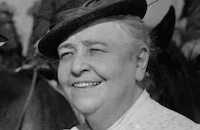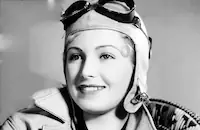Captain January

Brief Synopsis
Cast & Crew
David Butler
Shirley Temple
Guy Kibbee
Slim Summerville
Buddy Ebsen
Sara Haden
Film Details
Technical Specs

Synopsis
Captain January, the lighthouse keeper at Cape Tempest, Maine, takes care of a young orphaned girl he saved from a shipwreck, whom he has named Star. As Star sings and dances one day with her friend, Paul Roberts, and other unemployed sailors, Agatha Morgan, the new truant officer sent from Salem, learns that Star does not go to school and interrupts as one old sailor is teaching Star how to spit in the wind. Morgan berates Star and warns her that she will speak to Captain January about her. During Star's birthday party, "Cap" and his old crony, Captain Nazro, the government inspector, are showing off their tattoos as Morgan enters. She warns that it is within the power of the school authorities to have Star sent to an institution if she is not raised properly. When Cap brags that Star can read and write as well as an eight-year-old, due to his instruction, Morgan arranges for her to take a test at the school with her nephew Cyril, whom she would like to skip a grade. Cap and Nazro take Star to a dress shop to get her a new outfit for the examination, but the one Star likes costs $41.71, which Cap does not have. At Nazro's urging, they visit the Widow Croft, who, despite Cap's repugnance toward her, hopes for a marriage proposal from him, and she gladly lends the money. Star does well on the examination and is admitted to the third grade, while the stuffy Cyril gets nervous and is not allowed to advance a grade. When Nazro gets a telegram from Washington stating that automatic equipment will be installed in the lighthouse and that Cap will soon lose his job, he keeps the news from Cap and writes to Mr. and Mrs. John Mason in Boston, whose names he found in the scrapbook the captain recovered when he rescued Star. Cap learns about the change, however, from another sailor. When Cap cannot get another job, Nazro, at the urging of Star's teacher, Mary Marshall, who is afraid Morgan will get a court order to have Star taken away, sends the Masons a telegram. When Nazro, trying to cheer up the depressed Cap, tells him about the telegram, Cap explodes in anger and accuses Nazro of plotting to take Star away from him. As the new equipment is installed at the lighthouse, Cap plans to take Star to the Widow Croft's to live, but Nazro informs him that Morgan is on her way accompanied by a deputy sheriff with a court order to take Star. Cap and Star hide out with Paul on Nazro's boat, but at night, as Nazro brings them supplies, the deputy sheriff and Morgan follow. Cap hits the man, who still manages to take the crying child away. On shore, Mary tells the deputy that John Mason, who, as the American consul of Morocco, had been away the previous four years, has just arrived with proof that Star is his niece. Satisfied, the deputy turns Star over to Mason and his wife. Although Star is happy with her abundant new toys in the Masons' big house, she misses Cap. As a surprise, the Masons take her on a trip to their boat, where, to her delight, she finds that they have hired Cap as the captain, Nazro as first mate and Paul as the crew. Now that he has a job, Paul can marry his sweetheart Mary. Cap is a bit chagrined to learn that the Widow Croft is the ship's cook, but they all sing happily with the joyous Star at the end.

Director
David Butler
Cast

Shirley Temple

Guy Kibbee

Slim Summerville

Buddy Ebsen

Sara Haden

Jane Darwell

June Lang
Jerry Tucker

Nella Walker

George Irving
James Farley
Si Jenks

John Carradine
Earl Eby
Carlton E. Griffin
Gladden James
Frank Darien

Mary Mclaren
Geneva Sawyer

William Benedict
Crew
Salvatore Cammarano
Mary Crumley
William Darling
B. G. Desylva
Gaetano Donizetti
Jack Donohue
Ed. Ebele
Sam Hellman
Roger Heman
Arthur J. Lamb
Gladys Lehman
Thomas Little
Don Marquis
Sidney D. Mitchell
R. C. Moore
Eleanor Morra
Irene Morra
H. W. Petrie
Lew Pollack
Ad Schaumer
John Seitz
Louis Silvers
Harry Tugend
Arthur Von Kirbach
Gwen Wakeling
Darryl F. Zanuck

Film Details
Technical Specs

Articles
Captain January (1936)
Based on an 1891 children's book by Laura E. Richard, Captain January, the story of a foundling raised by a Maine lighthouse keeper, had been a winning vehicle for an earlier child star, Baby Peggy, in 1924. Fox dusted it off for Temple and gave her several impressive and complex musical numbers that showed off her acting, singing and dancing skills. In one number, Temple dances down a 45-foot long spiral staircase while reciting the multiplication tables. In her autobiography, Child Star, she recalled that it was fiendishly difficult. "There were three things to do at once: the taps, move down the spiral staircase a step at a time, and synchronize the multiplication tables with both taps and movements."
In her book, Temple captions a photo of her dancing with Buddy Ebsen in Captain January "The best dancing partner." It was Ebsen's second film. The vaudeville and Broadway hoofer was brought to Hollywood by MGM in 1935, and made his film debut that year in Broadway Melody of 1936. In their Captain January duet, "At the Codfish Ball," small, round Shirley and lanky, loose-limbed Ebsen make an incongruous, but delightful dancing duo. "Up and down stairs we went, threading our way among bushel baskets of lobsters, leaping up and down an old rain barrel," Temple wrote. "That barrel was a problem. I couldn't jump that high. Ebsen solved it by holding me cheek to cheek with my legs dangling, and then vaulting up himself. As he later jokingly told me, he had fallen arches and was wearing steel supports in his shoes. My weight fastened at his neck must have been all he could handle."
Those lobsters also worried Shirley. To keep them from getting out of their baskets, they were boiled, then painted black to return them to their natural color. As soon as the number was finished shooting, the crew cracked them open and ate them. Lobsters weren't the only dangerous wildlife on the set. In another scene, Temple played opposite a four-foot tall crane, and was dismayed when it snapped at her. A prop man solved that problem by hammering nails into the crane's webbed feet to keep it in place. The prop man assured Shirley that the crane didn't feel a thing.
As if all these shenanigans weren't enough, Temple even sings the sextet from the opera Lucia di Lamermoor, reduced to a trio, with Guy Kibbee and Slim Summerville. That was the final straw for New York Times critic Frank Nugent, who harrumphed, "Mistress Temple skips the high notes, but makes up for it by tap dancing the multiplication table...All this must sound fairly encouraging to the Temple enthusiast, indicating still greater wonders of the cinema's wonder-child, but we fearfully suspect that not even these glories can atone for Captain January's moss-covered script."
British novelist and critic Graham Greene's review was more provocative. He called Captain January "a little depraved, with an appeal interestingly decadent," and wrote of Temple, "some of her popularity seems to rest on a coquetry quite as mature as Miss Colbert's, and on an oddly precocious body, as voluptuous in grey flannel trousers as Miss Dietrich's." When Greene wrote an even more sexualized review of Temple's Wee Willie Winkie (1937) the following year, Temple's parents and Fox had enough. They sued Greene and his publisher for libel and won.
As usual, Temple fans adored Captain January and ignored the critics' complaints. The film broke box office records in Milwaukee, Portland, Maine, Dayton, Richmond, Cincinnati, Boston, and Baltimore, according to Time magazine. It was another success everywhere for Temple, and her string of hits continued until she entered adolescence. She left Fox in 1940, and although she continued to act for another decade, she never achieved the success as an adult actress that she had as a child.
Director: David Butler
Producer: B.G. DeSylva
Screenplay: Sam Hellman, Gladys Lehman, Harry Tugend, based on the novel by Laura E. Richard
Cinematography: John Seitz
Editor: Irene Morra
Costume Design: Gwen Wakeling
Art Direction: William S. Darling
Music: Songs by Lew Pollack, Sidney D. Mitchell, and Jack Yellen
Principal Cast: Shirley Temple (Star), Guy Kibbee (Captain January), Slim Summerville (Captain Nazro), Buddy Ebsen (Paul Roberts), Sara Haden (Agatha Morgan), Jane Darwell (Eliza Croft), June Lang (Mary Marshall), Jerry Tucker (Cyril Morgan), Nella Walker (Mrs. Mason), George Irving (John Mason).
BW-78m.
by Margarita Landazuri

Captain January (1936)
Quotes
Trivia
Notes
According to information in the Twentieth Century-Fox Records of the Legal Department at the UCLA Theater Arts Library, writer Jack McGowan was assigned to the film for one day but did no work on it. Some scenes were shot at Point Lobos State Park in CA. Hollywood Reporter production charts list as cast members Gareth Joplin and Mary Carr. Their participation in the final film has not been confirmed. The film was previewed in Long Beach on January 29, 1936. An aria from the opera Lucia di Lammermoor, originally written as a sextette, was performed in the film by Shirley Temple, Guy Kibbee and Slim Summerville. Time noted that this film broke box office records in Milwaukee, Portland, ME, Dayton, Richmond, Cincinnati, Boston and Baltimore.
According to news items and information in the legal records, the publisher L. C. Page and Co. sought an injunction against the film's distribution, claiming that they acquired the motion picture rights to the novel in 1923. After the U.S. Circuit Court for the 2d Circuit decreed a preliminary injunction, Twentieth Century-Fox agreed to pay a settlement of $50,000. Distribution of the film was held up until the settlement was reached. An earlier film based on the same source was made in 1924 by Principal Pictures; it was directed by Edward F. Cline and starred Hobart Bosworth and Baby Peggy (see AFI Catalog of Feature Films, 1921-30; F2.0776).














